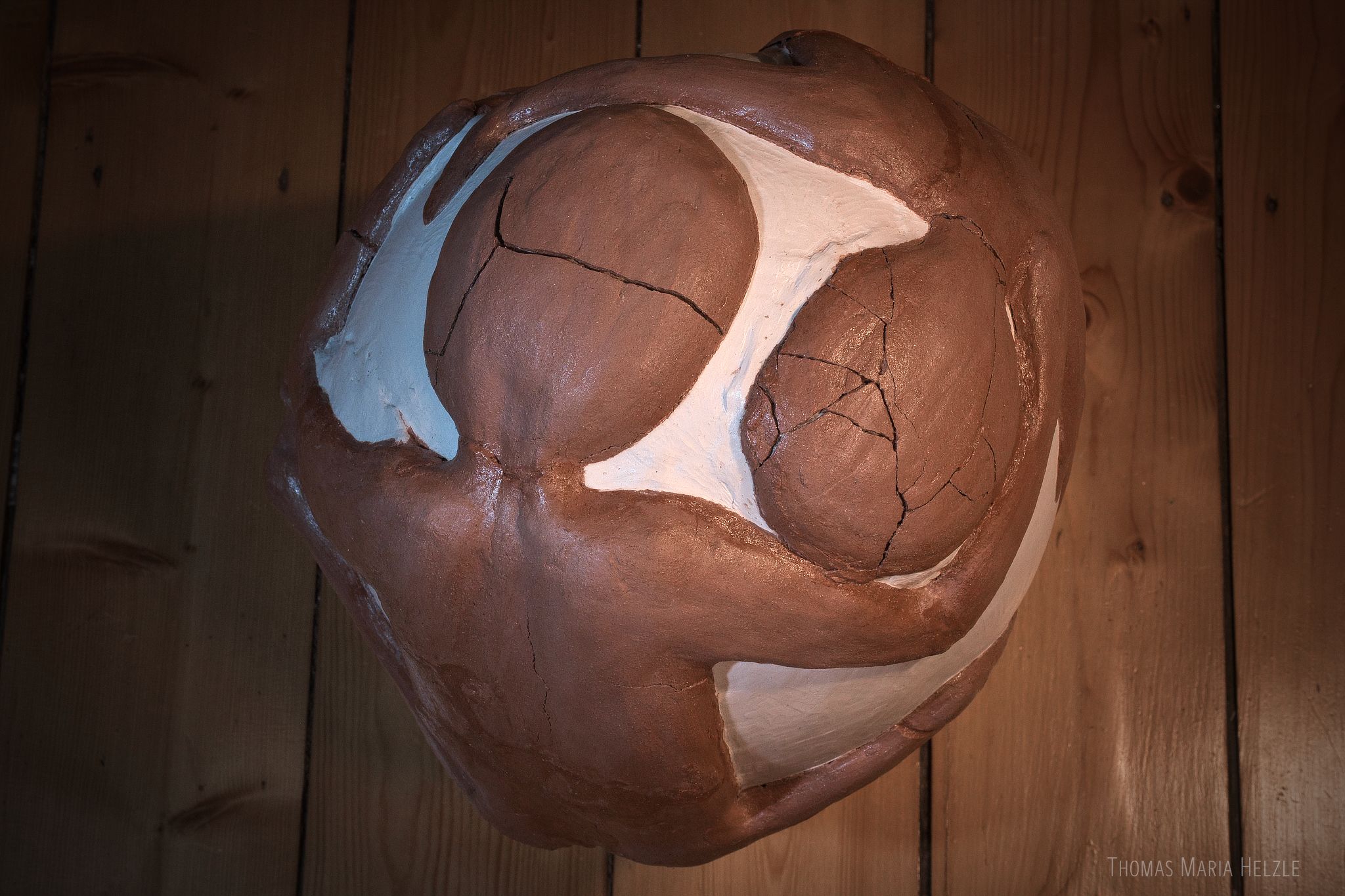Like clay doesn't stick to plaster, many of us are born into a world where we do not connect with our surroundings too well.
Either we are "different" from what we're expected to be, or we land in a place that is actively or passively hostile to us in some way or other - or many.
So from the initial fullness and wholeness of our soul and body, we shrink and break. We adapt to a distorted reality to survive, grow into the espalier provided.
Because we must.
To survive.
Those cracks may heal over, building scar tissue. Or we may gloss over them or fill them in with some story, behaviour or posture.
But the pain underneath remains.
The deformation hurts.
And no, time doesn't heal all wounds.
That is a myth.
It doesn't heal anything.
Often it actually is getting worse and festers, until a moment where it needs out.
A certain situation may bring it to the fore.
And since many of us got those wounds from the people closest to us, it may raise it's head exactly where we don't want it, in our relationship with those we love.
And it takes a lot of love and courage to see the other through those distortions.
Not excusing them, but seeing them for what they really are - and aren't.
And together, real healing is possible, if we work on it.
Yes, the scars will stay, but they may no longer define us.
This can be a long and painful process.
But it is worth it.
Growing together is the most beautiful thing.
This sculpture was in the making for a very long time:
In the early 90ies I had the idea to create a sculpture based on a big balloon with two people embracing. I first wrapped it in plaster dressings for stability and then put some more material on top, to get some thickness. Then I began to lay out the two figures - still with plaster - but somehow stopped in the middle of it and never finished.
But it lived with me for almost three decades, standing - beloved - in my office during all the time I worked mostly in 3D graphics.
In early 2023 I decided to finally finish it.
But instead of using plaster as initially intended, I used dark, warm red clay for the figures.
Now clay does not really stick to plaster. And when drying, it shrinks something like ~7% - It was clear that this would be an “interesting process” in the spirit of the Chinese proverb.
I kept the original proportions and forms of the figures as a basis mostly, as I had lain them down so long ago, but in some areas I went outside of those old outlines - which I kept visible.
Sculpting went well, but when the clay dried, it was really hard to watch it break and fall off.
The next step was to put everything back together with the help of acrylic binder - this also gave the clay a bit of a glaze.
Finally I scratched off some of the surface of the plaster, which had become very spotty from age, clay and the acrylic, to get the pure, raw plaster-white back.
Underneath all our wounds and scars and cracks and pains, there is a central core that always remains pure and to which we can return.
